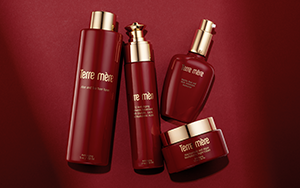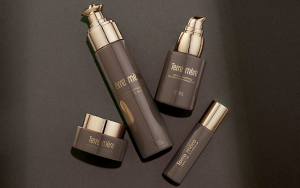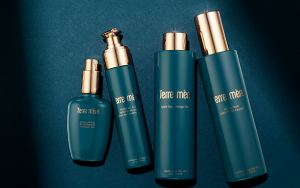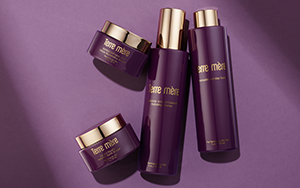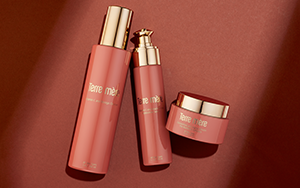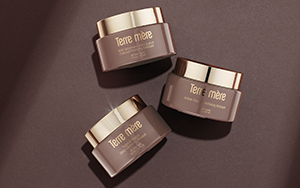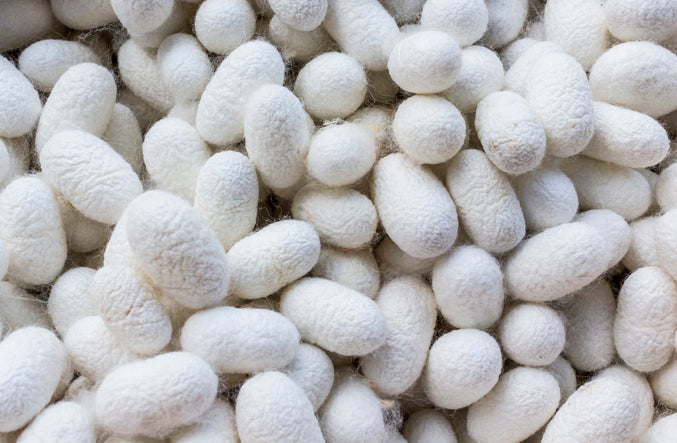
Silk, the natural fiber coveted for its luxurious softness and shine, has been employed by humans for use in cosmetics and clothing for centuries. And although it’s a powerful, natural ingredient, there’s a good reason to skip the silk altogether: it’s a product of silkworms, animals that endure suffering when raised and exploited by humans. That’s why we choose to opt for plant-based silk proteins in our cosmetics. “Save the silkworms” isn’t a typical rallying cry heard among activists, but that doesn’t mean it’s not a worthy cause. After all, silk protein really is a miracle skin-saver — but plant-based alternatives are even better!
Silk For The Skin
As a natural compound, silk is incredibly resilient, lending its protective properties to those who apply it to their skin. Alongside chains of amino acids (which we’ll go into detail about later), silk is composed of two main proteins: sericin and fibroin.
Sericin forms a layer of protection over the skin and helps keep it moisturized, a key to promoting youthful, supple skin and reducing signs of aging. Fibroin is known for repairing skin cells and balancing moisture levels, which is essential for reversing signs of sun damage, healing scar tissue, and reducing signs of skin wear and tear. The benefits of these two proteins have been compared to those of hyaluronic acid, a powerful, natural skincare ingredient used to boost skin hydration and reduce the appearance of aging.
Fibroin also contains a high percentage of amino acids glycine and alanine, which are easily absorbed into the skin. Together, this combination of amino acids promotes cell repair and regeneration, maintains the skin’s hydration levels, boosts collagen production, and can protect against sun damage caused by harmful UV rays.
Beyond improving skin hydration and repair, silk protein is known for clearing red, inflamed acne breakouts by increasing cell metabolism and stimulating blood circulation.
Despite all the skin-soothing perks silk can offer, there’s a catch. The benefits of natural silk — the proteins that come from silkworms, not from plant compounds — are diluted in the harvesting process. What’s more, natural silk is obtained via cruel practices that involve the abuse of silkworms.
A Sad Existence For Silkworms
The methods employed for obtaining silk are questionable at best and cruel at worst.
Silk is the natural fiber that silkworms (the caterpillar form of silk moths) weave to make their cocoons in the pupal stage. Once silkworms have entered this stage, workers boil or gas them alive so their cocoons unravel. It goes without saying that the silkworms don’t make it past their pupal stage alive. It’s estimated that roughly 6,600 silkworms are killed to make just one kilogram of silk.
In some cases, silk is produced by killing silkworms while they’re still in their caterpillar stage, before they create their cocoons. Workers extract the silk glands from the caterpillars’ heads, which are stretched into threads known as silkworm gut, a common lure used in fly fishing.
Additionally, silkworms “produce endorphins and have a physical response to pain,” according to PETA UK, rendering the common fallback excuse of “they’re just worms, they can’t feel anything!” invalid. And while it’s true that the insect nervous system varies from that of mammals, they are still able to transmit signals from external stimuli and trigger an internal response.
Regardless of the methods employed for silk extraction, the bottom line remains that natural silk is a product of animal exploitation. That’s why we’ve developed a vegan, cruelty-free alternative that works just as well as natural silk does.
Soft As Silk — But Not As Cruel
Remember those amino acid chains mentioned earlier in this article? Amino acids are an important building block of silk protein, and they’re part of the reason why silk is so beneficial for the skin. However, it’s possible to reap the benefits of those amino acids without making silkworms suffer in the process. Harnessing the power of 17 different amino acids from plants like molasses, our vegan formula replicates the molecular structure of silk proteins and offers its same effects on the skin. What’s more, the amino acids found in our Silk Protein Amino Acid Blend are identical to those found in collagen and elastin, two proteins vital for maintaining the skin’s elasticity and firmness.
Simply put, our skin needs amino acids to stay healthy. They’re essential to maintaining moisture in the skin, resulting in an overall youthful-looking, smoother complexion. Amino acids also play a role in softening fine lines and wrinkles, thanks not only to their hydrating powers, but also to their share of antioxidants. Antioxidants are molecules that neutralize free radicals, volatile molecules that damage cells and lead to dark spots and premature signs of aging. Exposure to free radicals stems from a variety of environmental stressors, such as pollution, cigarette smoke, and UV rays.
Amino acids also aid in the strengthening and repairing of skin cells, which leads to brighter, firmer skin tone.
Clearly, silkworms don’t have to suffer on account of our skincare needs — the natural power of plants does just the trick!

